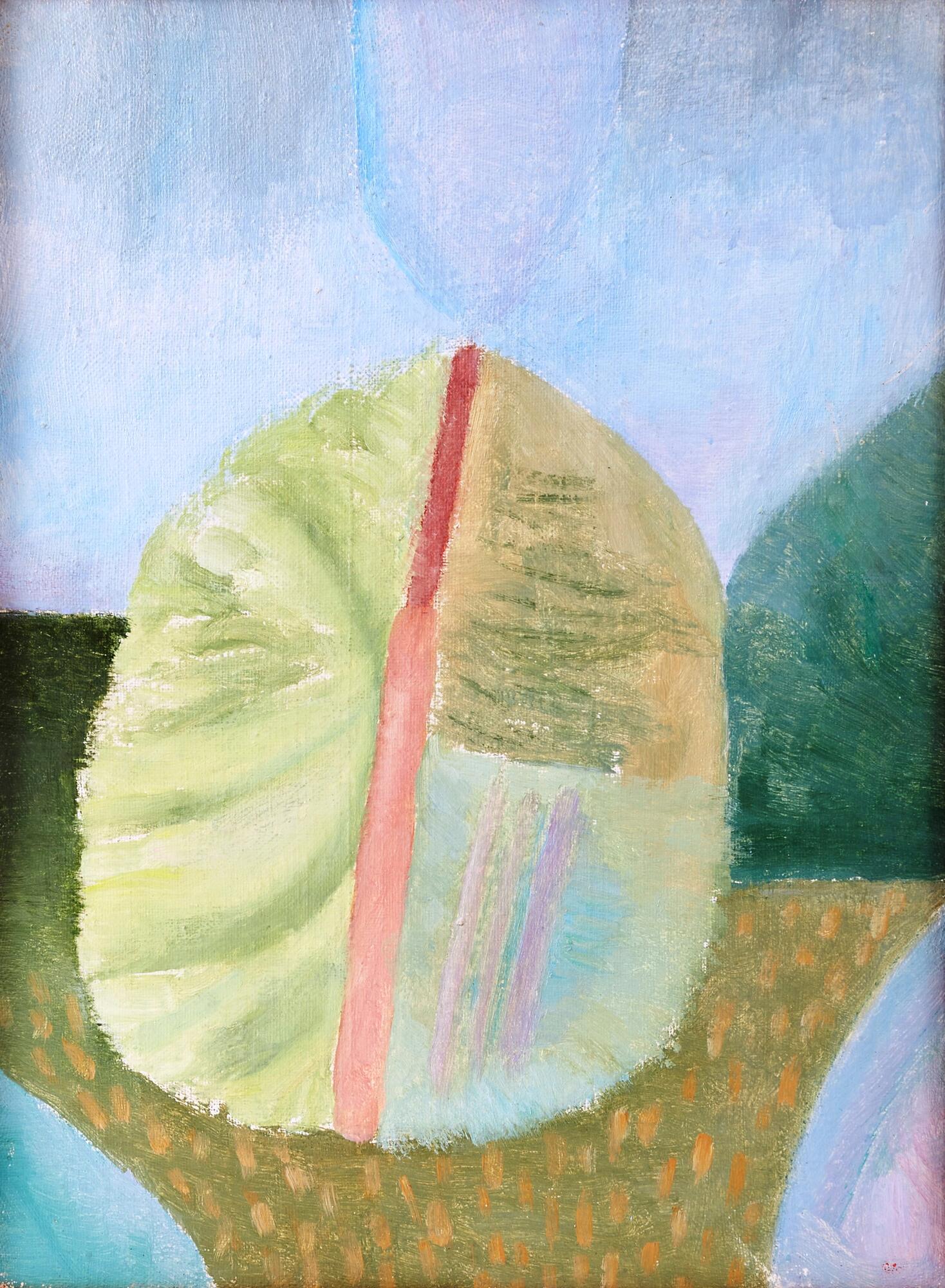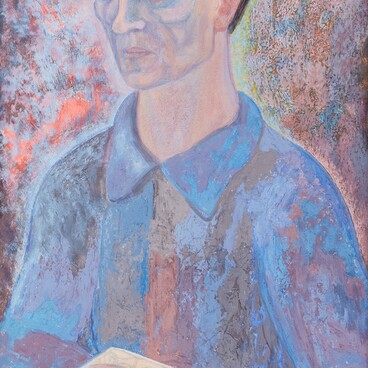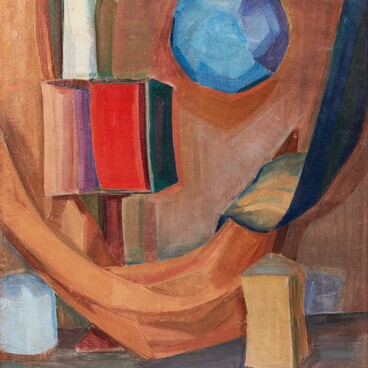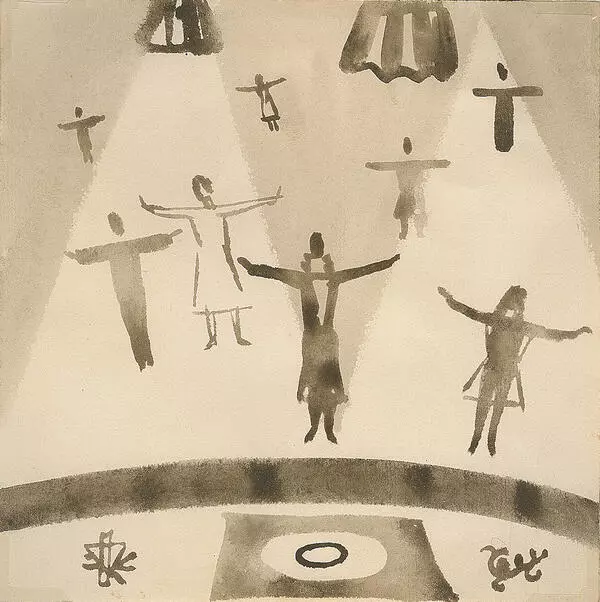The work “Lisiy Nos. Tree” was created during the period when Vladimir Vasilyevich Sterligov was developing the famous “bowl-dome” painting system. According to a well-documented story, this stage of his career began on April 17, 1960.
On that day, Sterligov, rather advanced in his age, went to draw on Krestovsky Island in Leningrad, where he had an epiphany. Suddenly, he saw a bowl of the sky and earth; he instantly sketched what he had perceived, called his drawing “The First Butterfly” and realized that he had discovered a new artistic world. He would then further develop this idea.
“I learned from Malevich, and after the square came my bowl. The idea of it is an open bowl. It is the curve of the world, and it will never end… The line divides, while the curve unites… The curve coincides with nature.” Sterligov studied drawing in private studios; in 1925, he met Kazimir Severinovich Malevich.
Vladimir Sterligov was admitted to the State Institute of Art and Industry, where he researched the issues of Cubism and Suprematism. He worked under the supervision of Kazimir Malevich until 1934. Later, he was falsely accused of a crime and had to spend several years in a labor camp in Karaganda. After serving his sentence, he continued painting there.
In 1940, he obtained a residence permit for the town of Petushki located near Moscow, but mostly lived in Moscow. At the beginning of 1941, he moved to the town of Malaya Vishera near Leningrad. During the Great Patriotic War, he fought on the Karelian front, where he was seriously wounded. He was later evacuated to Alma-Ata.
There he met his future wife Tatiana Nikolayevna Glebova, a student of Pavel Filonov. In 1945, they returned to Leningrad together, where they worked in commercial graphics for the Chamber of Commerce and designed the exhibitions of the Museum of Ethnography of the Peoples of the USSR and the Museum of the History of Leningrad.
From 1960 till the end of his life, Vladimir Sterligov was engaged in the theoretical and practical development of the artistic idea of the “cup-dome space”: the artist believed that the curve, the bowl, and the dome were the basis of the symbolic and religious structure of the universe. His ideas were supported by a group of like-minded people and followers.
Throughout the artist’s life, only a few exhibitions of his works were held, mostly in the workshops of his colleagues. The official exhibition, which was organized by the Leningrad Union of Artists in April 1966, was closed four hours after the start by a decision of the board members of the Union.


